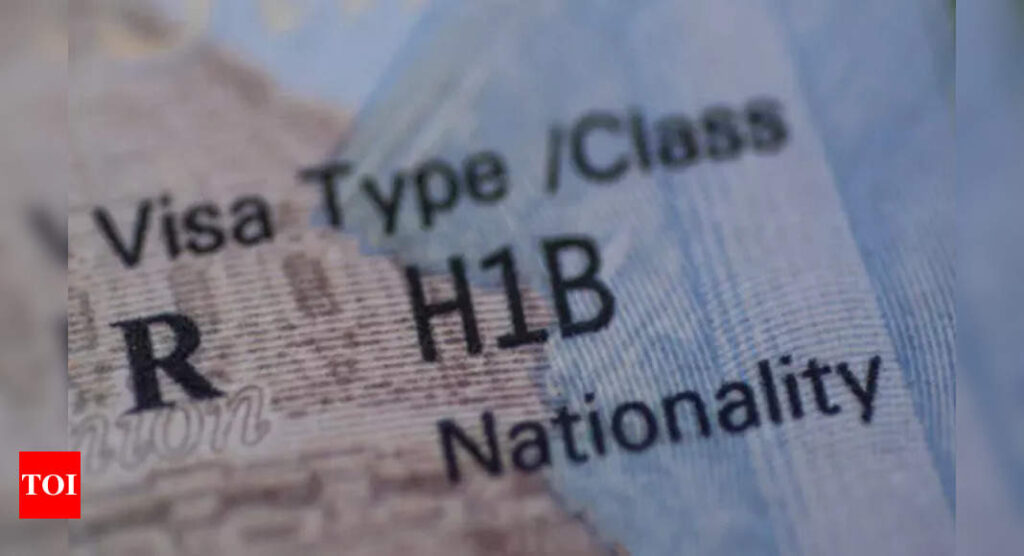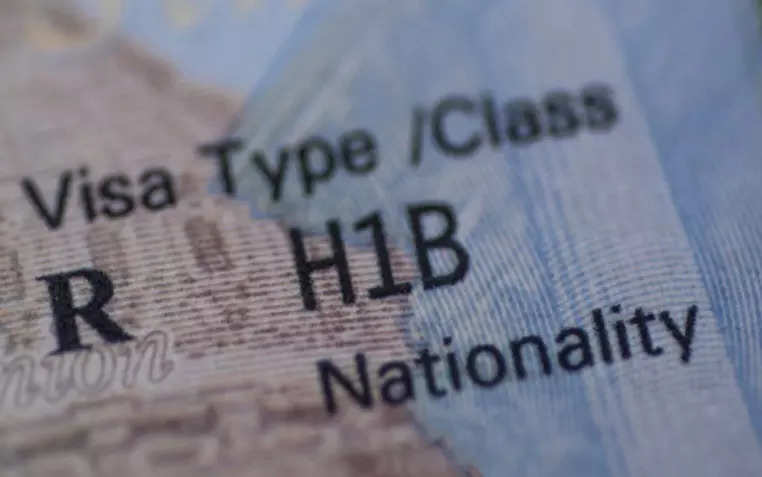[ad_1]
In January 2023, the US Citizenship and Immigration Services (USCIS), had issued an exhaustive document, running into 469 pages, relating to fee proposal hikes across a wide spectrum, including H-1B visas.
If the rule is enacted as has been proposed in January 2023, the costs for US employers who sponsor immigration employees will increase. Since 2019, sponsoring US employers are required to electronically register the beneficiaries (employees whom they wish to hire under the H-1B route).H-1B cap applications are then required to be filed only for those beneficiaries selected in the lottery process. The E-registration fee at a mere $10 is said to have led to some malpractices, it has now been proposed to be increased by 2050% to $215.
In its release relating to the proposed fee hikes, the US agency USCIS had pointed out that nearly 96% of the funding is from filing fees. The pandemic had dented its revenue stream – plagued by staff-shortages, processing backlogs at the immigration agency had increased manifold. “The proposed fee rule is the result of a comprehensive fee review at USCIS. This review determined that the agency’s current fees, which have remained unchanged since 2016, fall far short of recovering the full cost of agency operations,” the release states.
USCIS had pointed out that its current fee schedule is expected to yield an average of $3.28 per year during FY 2022 and 2023. (With the addition of premium processing, total fee revenue is expected to be $4.5 billion per year on average). However, the proposed fee rule would generate an additional $1.9 billion per year on an average compared with the current baseline. This is the amount necessary to match agency capacity with projected workloads, so that backlogs do not accumulate in the future, it had stated.
What exactly is H-1B E-registration fee
Prospective employers seeking to hire H-1B workers subject to the annual cap must now complete a simple electronic registration process before filing their petitions. This new process, which requires basic information about the employer and each prospective worker, streamlines processing, reduces paperwork and data exchange, and provides overall cost savings compared to the previous paper-based system.
The registration process opens for a minimum of 14 days each fiscal year. During this period, employers or their authorized representatives submit electronic registrations for each H-1B worker they intend to hire. Once the registration period closes, a selection process is conducted, and only those with selected registrations are eligible to file full H-1B petitions.
This streamlined process makes it easier and more cost-effective for employers to hire H-1B workers subject to the annual cap. It also helps USCIS process petitions more efficiently and improve overall program administration.
If the rule is enacted as has been proposed in January 2023, the costs for US employers who sponsor immigration employees will increase. Since 2019, sponsoring US employers are required to electronically register the beneficiaries (employees whom they wish to hire under the H-1B route).H-1B cap applications are then required to be filed only for those beneficiaries selected in the lottery process. The E-registration fee at a mere $10 is said to have led to some malpractices, it has now been proposed to be increased by 2050% to $215.
In its release relating to the proposed fee hikes, the US agency USCIS had pointed out that nearly 96% of the funding is from filing fees. The pandemic had dented its revenue stream – plagued by staff-shortages, processing backlogs at the immigration agency had increased manifold. “The proposed fee rule is the result of a comprehensive fee review at USCIS. This review determined that the agency’s current fees, which have remained unchanged since 2016, fall far short of recovering the full cost of agency operations,” the release states.
USCIS had pointed out that its current fee schedule is expected to yield an average of $3.28 per year during FY 2022 and 2023. (With the addition of premium processing, total fee revenue is expected to be $4.5 billion per year on average). However, the proposed fee rule would generate an additional $1.9 billion per year on an average compared with the current baseline. This is the amount necessary to match agency capacity with projected workloads, so that backlogs do not accumulate in the future, it had stated.
What exactly is H-1B E-registration fee
Prospective employers seeking to hire H-1B workers subject to the annual cap must now complete a simple electronic registration process before filing their petitions. This new process, which requires basic information about the employer and each prospective worker, streamlines processing, reduces paperwork and data exchange, and provides overall cost savings compared to the previous paper-based system.
The registration process opens for a minimum of 14 days each fiscal year. During this period, employers or their authorized representatives submit electronic registrations for each H-1B worker they intend to hire. Once the registration period closes, a selection process is conducted, and only those with selected registrations are eligible to file full H-1B petitions.
This streamlined process makes it easier and more cost-effective for employers to hire H-1B workers subject to the annual cap. It also helps USCIS process petitions more efficiently and improve overall program administration.
[ad_2]
Source link











More Stories
Google Maps: Three privacy features coming to Google Maps on Android, iPhones
Most-Downloaded IPhone App: This Chinese app was the most-downloaded iPhone app in the US in 2023
Ukraine’s largest mobile operator goes offline for millions of users after cyber attack